




 Obviously, as a comic, "Copper" requires illustrations which serve the narrative well. Kibuishi shifts the perspective in every frame to jump to the most effective depiction of action, or establishment of location. The overhead view of the first frame immediately impresses the vastness of the casino, which heightens the strangeness of the situation. When Copper and his dog Fred leave the casino, two different frames establish the passage of time with their shadows.
Obviously, as a comic, "Copper" requires illustrations which serve the narrative well. Kibuishi shifts the perspective in every frame to jump to the most effective depiction of action, or establishment of location. The overhead view of the first frame immediately impresses the vastness of the casino, which heightens the strangeness of the situation. When Copper and his dog Fred leave the casino, two different frames establish the passage of time with their shadows.

I’m not sure who did this piece, I stumbled across it online, but I think it’s really interesting. Though this piece is clearly contemporary it’s easy to see the influences of notable artists in it. The carefully rendered girl with the stylized clothing and hair, against the flat background layered with abstract patterns is strongly reminiscent of the work of Klimt. Also interesting is the fact that this work is clearly not digitally rendered, it appears to be watercolor and maybe graphite. The quality of the paint and graphite really make this piece seem alive. Though I like it overall the composition of the painting is a little strange, the way it splits nearly down the middle is not necessarily bad, but the reasons for that split aren’t really apparent so it could be off-putting to some. I’m not sure what this painting is really supposed to mean since I know nothing of its actual context, but the subjects of the painting, the moon, sleeping girl, owl, skull and rose make it seem allegorical as all of those things have symbolic meanings and have been used in countless other pieces in somewhat similar ways.




Tugboat Print shop is a print shop based in Pittsburgh, PA. Artists are Paul Roden and Valerie Lueth that collaborate on pretty much all of their prints. Every print they produce works well but this piece “America The Beautiful” is one that stands out especially to me. It is 24” x 32” and im pretty sure it’s a 5-color print and limited edition of 200 made. The Piece works well because of the use of color, and detail involved with the carving of the wood block. They captured the landscape very well. The mountains and buildings are awesome and I love how they keep sort of a cartoony style over the whole piece. The use of the boarder is a great touch also; the banners and flags make the piece a lot more passionate about the great country. Without the boarder it would still be a great piece, but I think it brings everything together. All the little details and objects all around the images makes it ten times more awesome, and the whole technical side of creating this is even more awesome in my opinion. I think it’s a great piece even if your not a fan of American politics like me, great image either way.

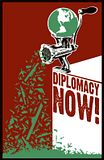
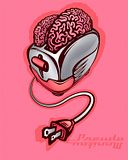

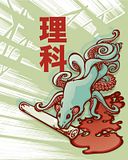
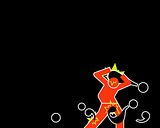
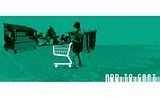
 Strange and beautiful things fall out of the internet every now and again. For the life of me I couldn't remember where exactly I got this image from and it took some digging to find out the name of the artist - Marek Okon, a Polish illustrator and concept artist who worked as a freelancer for companies such as SEGA, BioWare, LucasArts, Games Workshop, CRYTEK, and many others.
Strange and beautiful things fall out of the internet every now and again. For the life of me I couldn't remember where exactly I got this image from and it took some digging to find out the name of the artist - Marek Okon, a Polish illustrator and concept artist who worked as a freelancer for companies such as SEGA, BioWare, LucasArts, Games Workshop, CRYTEK, and many others.


 I came across this while searching for something different to put in my scrapbook. I think some other people have posted art by James Jean at the beginning of the semester, but when I found this poster I thought it was really interesting to see how he handles a more commercial piece. It promotes an LA concert by British singer Imogen Heap. After checking out the Imogen Heap entry on Wikipedia and listening to some of her songs on YouTube, I can't say that I like the actual singer... however, I just love this poster. James Jean's psychedelic-nouveau style and the color scheme are a perfect fit for the light (and, IMHO, somewhat trippy) music that the poster is promoting. I really enjoy the fluidity and movement of the piece, and I really appreciate the way he integrates a pretty complex color scheme with the incredibly detailed linework - I know from experience that this isn't easy to pull off well. I think the decision to use light colors for the lines is a nice touch, as it helps maintain that light feel and prevents the piece from becoming too overwhelming.
I came across this while searching for something different to put in my scrapbook. I think some other people have posted art by James Jean at the beginning of the semester, but when I found this poster I thought it was really interesting to see how he handles a more commercial piece. It promotes an LA concert by British singer Imogen Heap. After checking out the Imogen Heap entry on Wikipedia and listening to some of her songs on YouTube, I can't say that I like the actual singer... however, I just love this poster. James Jean's psychedelic-nouveau style and the color scheme are a perfect fit for the light (and, IMHO, somewhat trippy) music that the poster is promoting. I really enjoy the fluidity and movement of the piece, and I really appreciate the way he integrates a pretty complex color scheme with the incredibly detailed linework - I know from experience that this isn't easy to pull off well. I think the decision to use light colors for the lines is a nice touch, as it helps maintain that light feel and prevents the piece from becoming too overwhelming.
 This piece is called Just Ten More Minutes Mom by an artist who post on cghub.com under the surname of Contraomnes. I think this is a strange wonderful piece. I really like the weird contrast of innocence and danger. The picture was part of conceptart.org's Newborn Contest. The entry was about Newborn Imagination. Something that should resonate in most artists. Ahh splashing in the tub till the waters too cold, good times. Some of the odd things that happen and sorta work, as long as you don't think about too hard it, is the perspective and size relation of the for ground and back ground. I like the little oddities because they allow the focus to be brought to the center of the composition towards the child; especially with the triangular composition. But at the same time I am a little distracted because the variation in size and perspective ads another element in an already complex piece. The most interesting part of the composition for me, above all else, is the over lapping technique the artist employs with the imagined world and the real world. I really like the way the colors interact with each other and kind of blur the two worlds but at the same time I think my imaginary world might have a little more color to it: vibrant colors just say child's imagination but the muted colors I feel make the piece more attractive composition for a wider audience.
This piece is called Just Ten More Minutes Mom by an artist who post on cghub.com under the surname of Contraomnes. I think this is a strange wonderful piece. I really like the weird contrast of innocence and danger. The picture was part of conceptart.org's Newborn Contest. The entry was about Newborn Imagination. Something that should resonate in most artists. Ahh splashing in the tub till the waters too cold, good times. Some of the odd things that happen and sorta work, as long as you don't think about too hard it, is the perspective and size relation of the for ground and back ground. I like the little oddities because they allow the focus to be brought to the center of the composition towards the child; especially with the triangular composition. But at the same time I am a little distracted because the variation in size and perspective ads another element in an already complex piece. The most interesting part of the composition for me, above all else, is the over lapping technique the artist employs with the imagined world and the real world. I really like the way the colors interact with each other and kind of blur the two worlds but at the same time I think my imaginary world might have a little more color to it: vibrant colors just say child's imagination but the muted colors I feel make the piece more attractive composition for a wider audience.



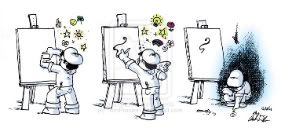




The artist I chose for this week is another I stumbled upon using google images. I did some research and browsed his site and his online portfolio. His name is Ryan Mauskopf and he is an illustrator, graphic designer, and musician from New York City. His favorite gallery of mine is his illustration section. What first caught my eye is the diversity of his portfolio. He has several different styles that are each very strong. But as I looked closer, I discovered one thing all of his pieces had in common (well except the b&w ones), excellent execution of color and shading, in particular his mastery of reflective light/color. In the piece “Why Wizards Shouldn’t Cook” (the first image) Ryan uses reflective color of the smoke against the wizard. His reflective color gives excellent luminosity to his images and provides fantastic depth. Take note, that as the color of the smoke changes, the reflected light it cast on the wizard changes too. Although Ryan doesn’t list where these images have been used, my assumption would be for online articles or magazines. His “Gaga Bo Peep” and “Cronus and the Delicious Baby” are satirical images towards pop society and the upper class. I very well see these accompanying articles in today’s media. Last but not least, “Medusa and the Optometrist” is another fine example that his work is often humorous. I’ve given his website at the bottom; it’s really worth checking out!

 Floyd O.L.J. Butler here. Today we are looking at Batman #577 penciled by Scott Mc Daniel. It is illustrated in a western cartoon style. the period it takes place in is the present sewers or swamps. The technique is comic book style with outlined in black lines that outline the character and his foe. This is for a comic book audience, meant to grab a buyers eye with Batman crouching over while the alligator lurks behind him. Scott Mc Daniel was commissioned by DC Comics to do this art piece This was the cover for May 2000 of Batman, was meant to bring a consumer in to buy the comic. I think it is a very successful piece, with Batman in dangerous waters with an alligator lurking behind him, it really jumps off the page. Makes me want to read it just to see if Batman gets out alive. It also looks kind of sinister, like Batman seems to not know the alligator is there. If you like Scott Mc Daniel art work check out Nightwing and Batman back issues.
Floyd O.L.J. Butler here. Today we are looking at Batman #577 penciled by Scott Mc Daniel. It is illustrated in a western cartoon style. the period it takes place in is the present sewers or swamps. The technique is comic book style with outlined in black lines that outline the character and his foe. This is for a comic book audience, meant to grab a buyers eye with Batman crouching over while the alligator lurks behind him. Scott Mc Daniel was commissioned by DC Comics to do this art piece This was the cover for May 2000 of Batman, was meant to bring a consumer in to buy the comic. I think it is a very successful piece, with Batman in dangerous waters with an alligator lurking behind him, it really jumps off the page. Makes me want to read it just to see if Batman gets out alive. It also looks kind of sinister, like Batman seems to not know the alligator is there. If you like Scott Mc Daniel art work check out Nightwing and Batman back issues.

First lady Michelle Obama’s fashion has made headlines around the world. She’s known for taking risks - with color, accessories, and lesser known designers. Her interesting choice of clothing has given her a signature style and earned comparisons to Jackie O. as the chicest First Lady in the White House since the Kennedy's. During the campaign trail for the preliminaries, Michelle Obama repeatedly won over the fashion critics with her fresh take on what a future First Lady should wear. Minni Havas is an illustrator represented by Pekka Agency. She is from Helsinki, Finland and she works with colored pencils and masking inks. This image of the First Lady clearly shows her passion for fashion, given the pose she's in, and was a way for Minni Havas to further emphasize Michelle's fashion sense to the public. Michelle is seen here as a powerful figure, not only in the political world, but in the fashion world as well. Prior to Michelle Obama, First Lady's were seen wearing dress suits and drab color schemes. She has definitely brought a new take on the First Lady and Minni Havas has done a good job in portraying that. Michelle Obama is fresh, modern and clean.


Cornelia Hesse-Honegger is a 20th century scientific illustrator from Switzerland. She is best known by her illustrations of bugs affected by radioactive residue left behind in Chernobyl. This series got her an article in the UK’s version of ‘Wired’ Magazine. The attention to radioactivity’s affect on insects, plants and animals in fallout zones has also made her a leading force within the art activism community.
Her work is highly detailed and more colorful than most scientific illustrations. Although she often uses watercolors to achieve muted colors that best mimic the actual color of the insect that is being portrayed. She also often has an array of insect shells on grid paper to compare the various ways a particular species has been mutated. 

She also decides to, as an artist; crop out the heads of the specimens as often as possible. This is most likely an attempt to take the gross factor out of the insect, so people can look past it and see the mutations. Often in her work the mutations are hard to see, because this is how the insect really appears and she makes no attempts to embellish the mutations.
She has quite a few toxic places on her website.



 This is the first cover illustration for the Harry Potter series which was done by Mary GrandPre. She has done not just all the Harry Potter covers and chapter illustrations, but other children picture books such as Chin Yu Min and The Ginger Cat, Pockets and several others. I felt that this piece was successful because when trying to grab a younger audience bright colors are very helpful. Also when Mary made this cover (and all of the other Harry Potter covers) she selected images that were used in the book to help show in one collaged image what the story would be about. What I found interesting about this was that every image she chose did not do anything to reveal any secrets about the story. So giving nothing away Mary was able to communicate what Harry Potter was about in an interesting and eye catching way for not only children but even adults.
This is the first cover illustration for the Harry Potter series which was done by Mary GrandPre. She has done not just all the Harry Potter covers and chapter illustrations, but other children picture books such as Chin Yu Min and The Ginger Cat, Pockets and several others. I felt that this piece was successful because when trying to grab a younger audience bright colors are very helpful. Also when Mary made this cover (and all of the other Harry Potter covers) she selected images that were used in the book to help show in one collaged image what the story would be about. What I found interesting about this was that every image she chose did not do anything to reveal any secrets about the story. So giving nothing away Mary was able to communicate what Harry Potter was about in an interesting and eye catching way for not only children but even adults.


